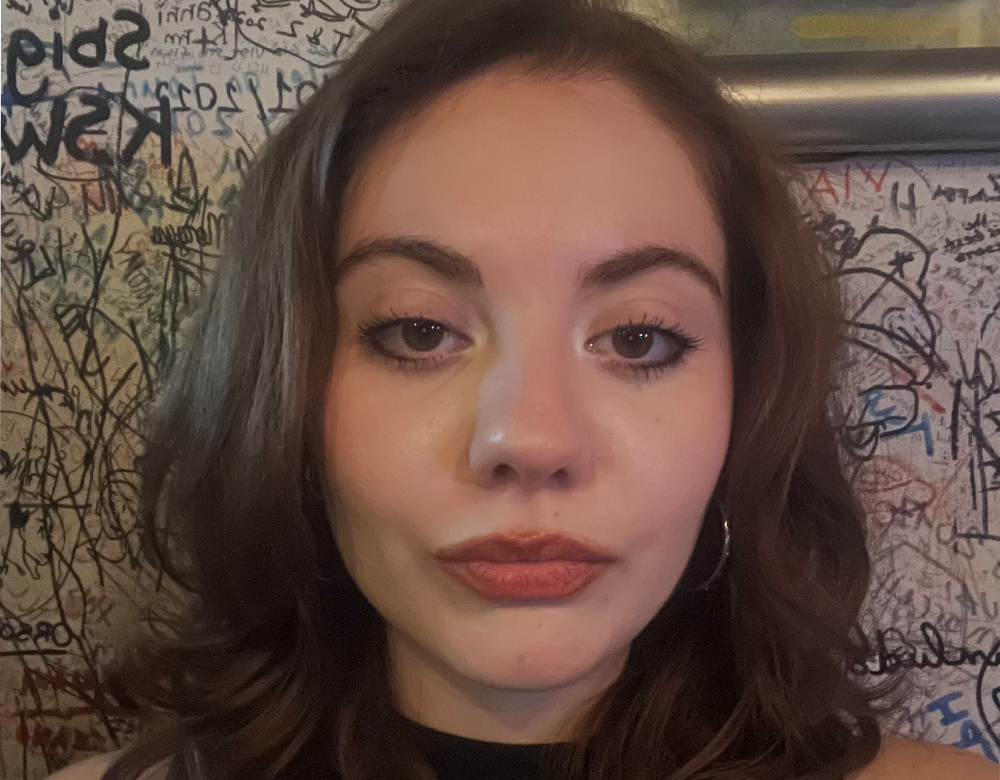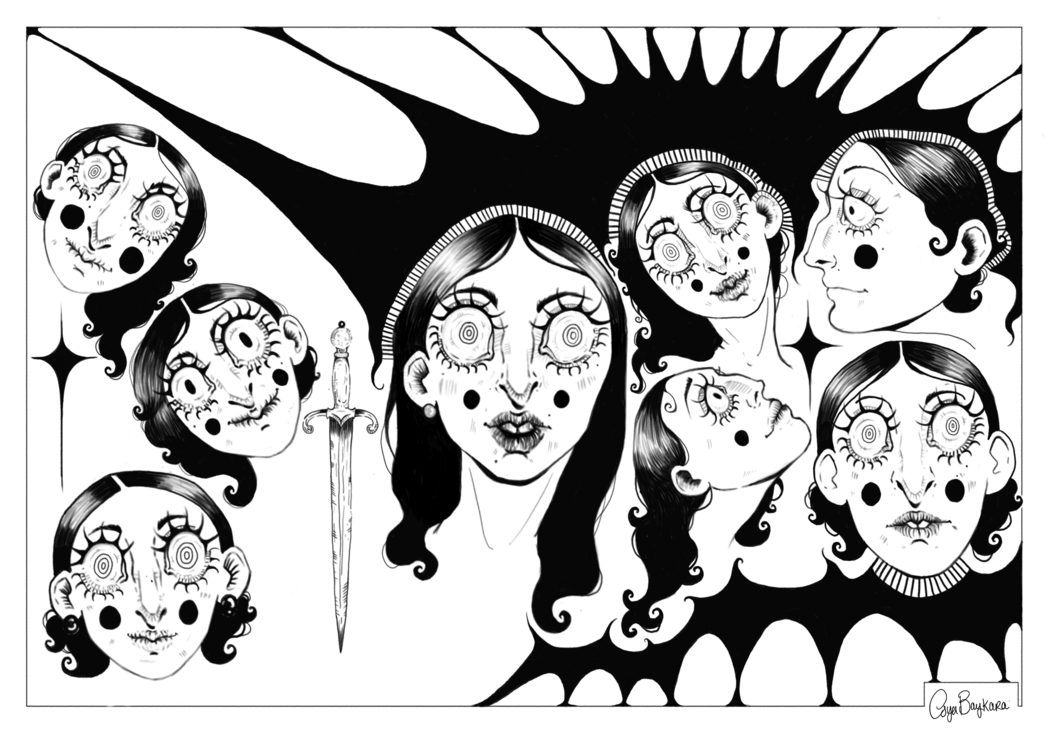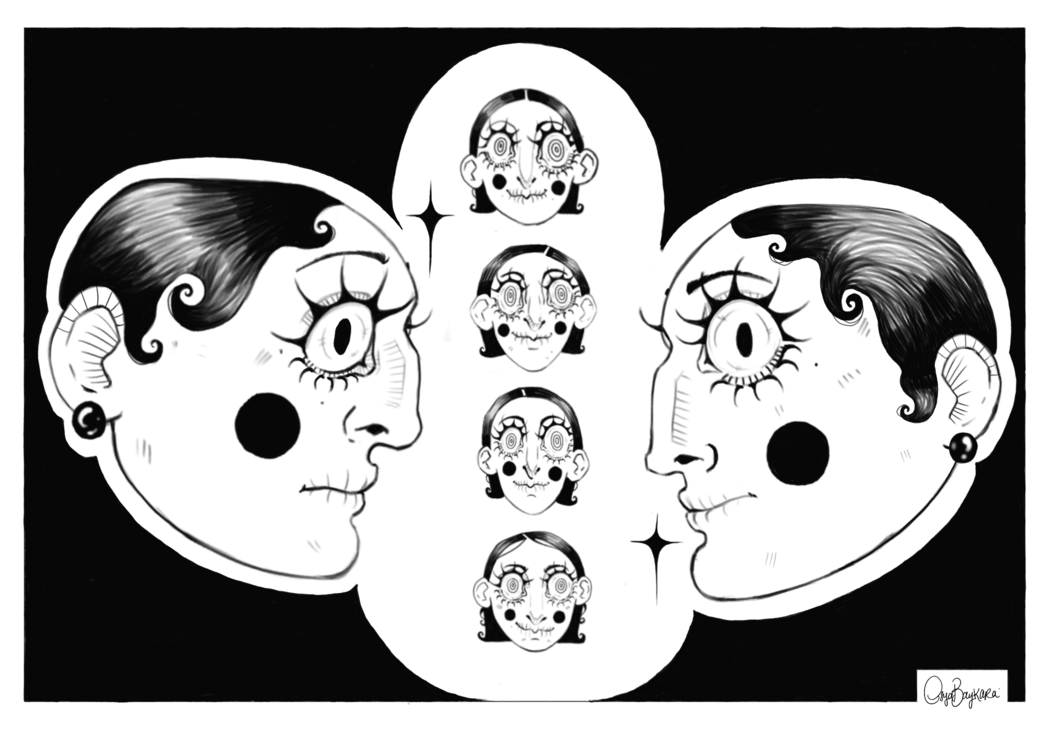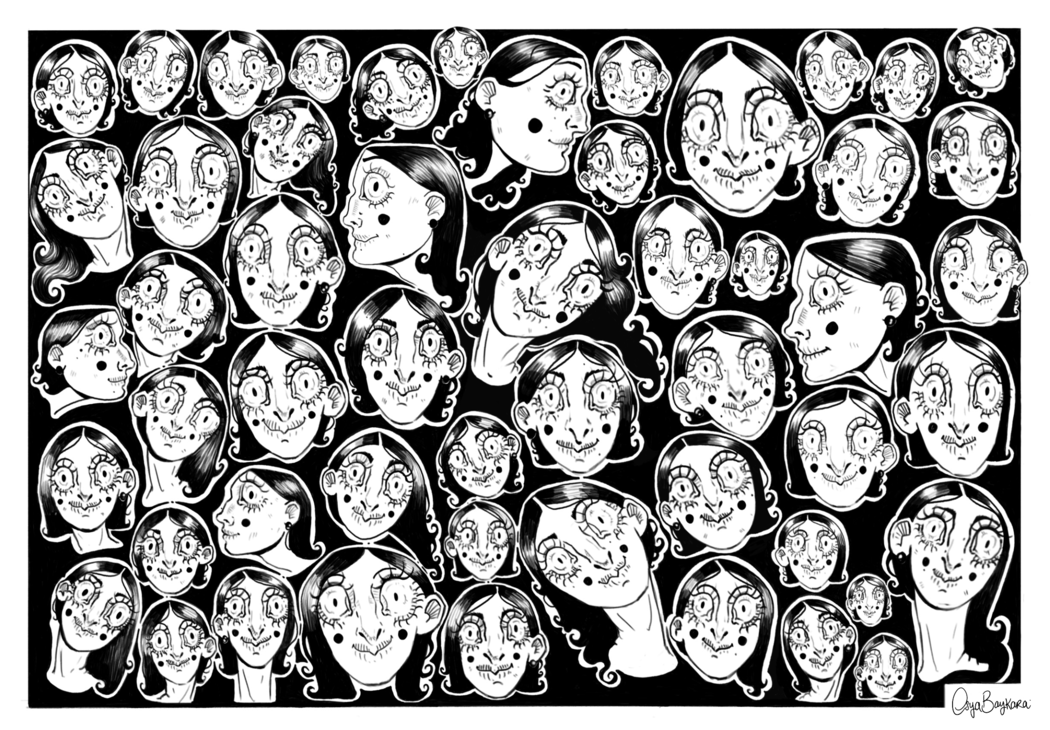Asya Baykara
Year of birth: 2002
Where do you live: Milan, Italy
Your education: BA in Psychology from Università Cattolica del Sacro Cuore
Describe your art in three words: layered, evocative, and surreal.
Your discipline: Visual art, illustration, and writing — with a focus on storytelling and psychological depth.
Website | Instagram

You describe your creative journey as an evolution from self-doubt to embracing your identity as an artist. Could you elaborate on this transformation and the turning point that allowed you to fully embrace your art?
Deep down, I am someone who meets life with love — in its flow, its wildness, and its quiet grace. I look upon it with a gentle gaze, believing that everything it holds is something to be adored. I suppose, at times, I adored life so deeply that I forgot I was a part of it. I watched it from afar, so mesmerized by its beauty that I drifted out of its current — lost in dreams that pulled me further from the shore of reality. And the farther I drifted, the more fear crept in; the more afraid I became, the harder it was to create.
Placing mirrors inside my own mind — observing myself, dissecting every gesture, meeting my thoughts with sharp reflection — had never exhausted me. If anything, it felt like home. Until 2025.
This year held up its own mirror and showed me how often I had stepped into the fire just to keep others warm — and how, all along, it was my own tenderness I had been longing for.
Then, drawing turned into something different. It stopped being a way to escape life. It became the way I stayed. A way to wrap myself in something gentle. I believe my return to essence — my reaching for art — began the moment I realized just how merciless I had been to myself.
The less I feared seeing myself, the less I feared being seen. And that was the moment everything began to shift, that was my turning point.
In your statement, you mention the concept of Kairos, the right moment in time. How has this idea influenced your work, and can you share a moment in your artistic practice when this concept became pivotal?
Kairos Portfolio was born in a sudden breath — almost impulsively, yet deeply inevitable. Without knowing where it came from, I found myself writing, sketching, envisioning — as if caught in a current I couldn’t see but couldn’t resist. It wasn’t just a burst of inspiration. It felt more like an eruption — the kind that comes not from stillness, but from years of self-silencing. It was the voice of someone who had spent years dimming her presence, rejecting recognition, denying her art, and unraveling her own light, finally rising up from within: “Enough.”
It wasn’t just a rebellion against a single moment — it was a quiet uprising against the version of myself I had outgrown. A reawakening. The beginning of recreating who I was.
And maybe through the power held in its name, Kairos, something changed. From that point on, when inspiration knocked, I didn’t hesitate. I stopped negotiating with fear. I simply showed up — and drew. I began moving with instinct, and the more I lost track of time, the more alive I felt. The creations I brought to life began to surpass my expectations, and that gave me strength. At its core, Kairos is a peace agreement I made with myself — a promise to live moment by moment, to feel fully, to follow freely, and to finally trust in the rhythm of life. Because now, every moment feels like the right one.
 Asya Baykara | Şahika
Asya Baykara | Şahika
The idea of perception, particularly the fragile boundary between seeing and being seen, plays a central role in your work. How do you explore this theme in your visual language, and how do you think your audience engages with this idea?
I believe life and time are always in search of a witness. It is witness that gives depth to our relationships, meaning to our lives, and shapes both our actions and thoughts. We are trapped in a cycle of seeing and being seen. At its core, this may be the deepest drive that connects us to the flow of nature.
Days spent unseen, unnoticed, are days filled with silent suffering.
This need to be witnessed may manifest as a yearning for the world to see our pain, as a silent cry for our suffering to be acknowledged, or as the quiet search for someone who will bear witness to our memories as they unfold with time. But in the end, we all seek to be seen — sometimes by strangers, sometimes by the ones who have caused us harm, and sometimes by the very hands that raised us.
Yet, sometimes, the very gaze we’ve spent a lifetime avoiding is the one that catches us off guard. In the moment we wish to remain invisible, we are struck by the most piercing gaze. In those moments, when we most wish to remain unseen, we are confronted by eyes that see too deeply. Despite the discomfort rising within us, we remain caught in the gaze we can’t escape. We are drawn into them, captivated by the depth of their understanding, even when we wish they didn’t.
You mentioned that each of your drawings represents a single face in infinite variations. What does this exploration of the human face signify for you, and how does it relate to your personal experiences?
Having experienced different aspects of drawing at various stages of my life, my deepest aspiration has always been to find my own style. My goal was to blur the boundaries between myself and my work, creating a seamless whole, where the lines between the two could no longer be distinguished. When someone looked at my work, I wanted them to instantly recognize that it was mine. This is why I constantly sought to create pieces that would strengthen and define my style. The repetition of my lines is an effort to make my work — or more precisely, my style — feel familiar, to make them more intimate with each glance.
After years of tracing my own asymmetry within the harmony of nature, I intentionally sought to emphasize this asymmetry in every creation, shaping each face with my own hands.
Though the repetition of my style, I ensured that each element within my pieces remained unique. But at their essence, the shared structure of my works is not solely defined by their thematic unity; it is also marked by the unease they awaken. This discomfort, this unease arises from the recurring faces — faces that, much like those we pass by on the streets, silently witness our existence and the fleeting moments we live. They are, in truth, the faces we never truly see — faces that slip from memory, as we slip from theirs. Perhaps they are the eyes that dissect, that judge, or that silently diminish us, leaving us with the weight of our own invisibility.
 Asya Baykara | Ayna✦Mirror
Asya Baykara | Ayna✦Mirror
Your collages represent a departure from traditional boundaries, and you’ve described this process as a way to reconstruct reality. What does “reality” mean to you in the context of your work, and how do you reconstruct it through collage?
Reality, to me, is not a fixed construct but a fluid, ever-shifting experience. It is shaped by memory, perception, and the unseen forces that govern our existence. In my collages, I reconstruct reality not to define it but to unravel it—to expose its contradictions, its echoes, and its fractures. Through layering, repetition, and fragmentation, I seek to capture the feeling of time slipping, of identities dissolving, of moments folding into one another. Each composition is a dialogue between what is remembered, what is imagined, and what is left unsaid. I spend a lot of time creating collage works, and the harmony between each element shapes the theme. Instead of following a specific theme, I allow the theme to be shaped by the pieces themselves. I give them space to create their own reality.
The works you create combine both illustration and narrative. Can you explain how these two elements complement each other in your pieces, and do you feel one medium is more important than the other in conveying your message?
For me, the true explanation of an art work lies in the emotions it evokes. This is why the narratives I write about my works are not meant to convey what I intended to express, but rather what I felt when I completed them. Each piece of writing follows the completion of the artwork and speaks not to what I saw, but to what I experienced in that moment. I find unique joy in expressing myself through every form of art, which is why I continue to explore various fields, contemplating how to bring these disciplines together. Writing is a precious art form to me, and that is why I seek to put into words the emotions I experience in my works, emphasizing the importance of feeling.
 Asya Baykara | Fisilti✦A Whisper
Asya Baykara | Fisilti✦A Whisper
Your work seems to explore both the familiar and the unfamiliar. How do you approach this balance, and what role does uncertainty play in your art-making process?
I often find myself drawn to the threshold between the known and the unknown — the delicate space where recognition blurs into uncertainty. I don’t try to resolve that tension; I invite it in. In fact, uncertainty plays a central role in my creative process. It allows me to stay curious, to respond instinctively rather than impose control. The familiar elements in my work serve as anchors, while the unfamiliar invites exploration. It’s in that dissonance — where clarity slips just out of reach — that the emotional weight of the piece begins to form.
I want the viewer to feel both connected and slightly unsettled, as if they’ve stumbled into a memory they don’t fully recognize but somehow still feel.

Leave a Reply
You must be logged in to post a comment.